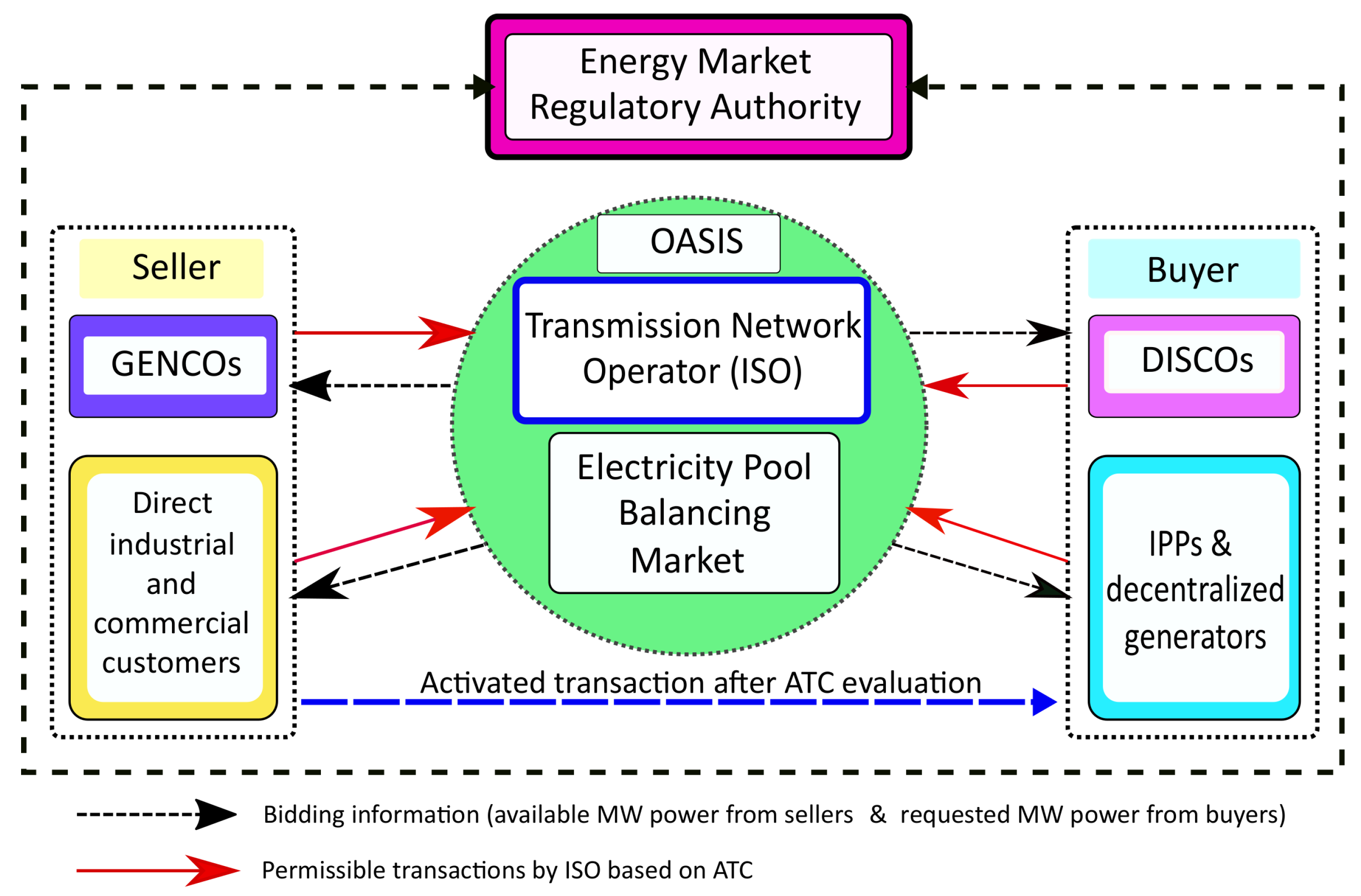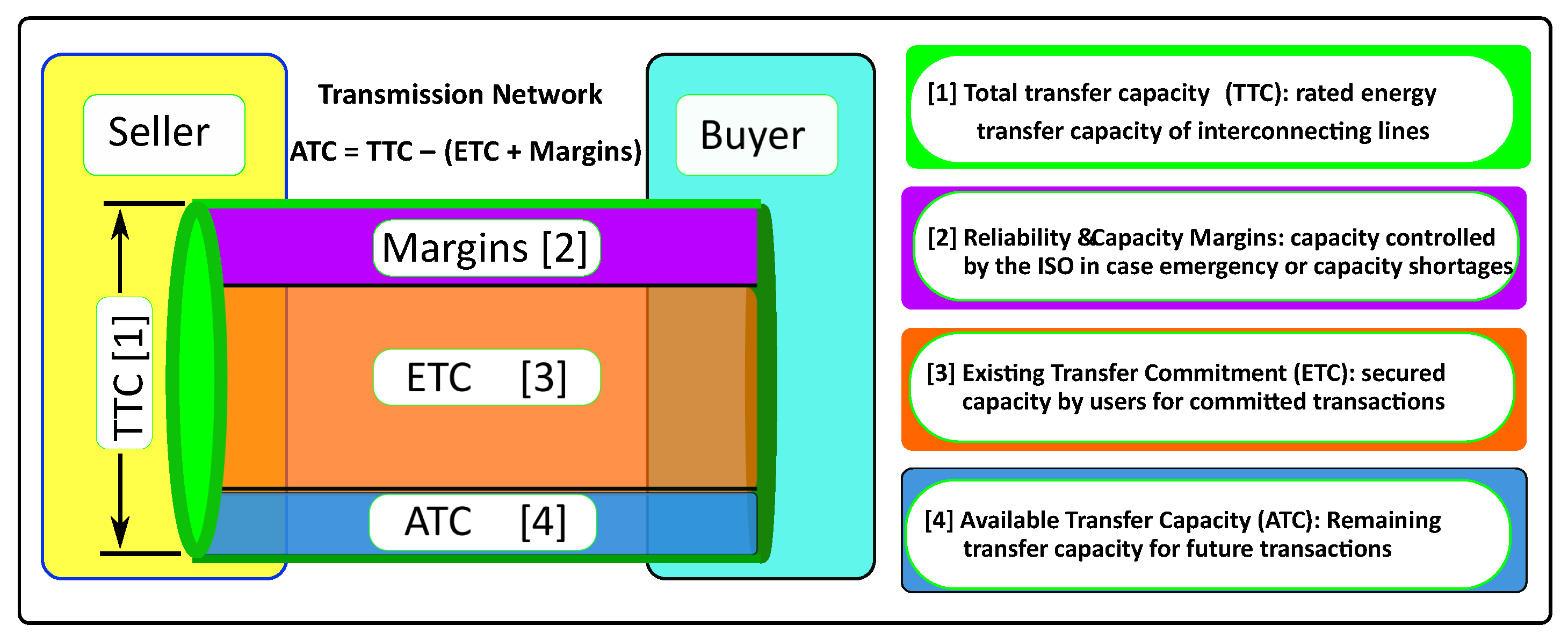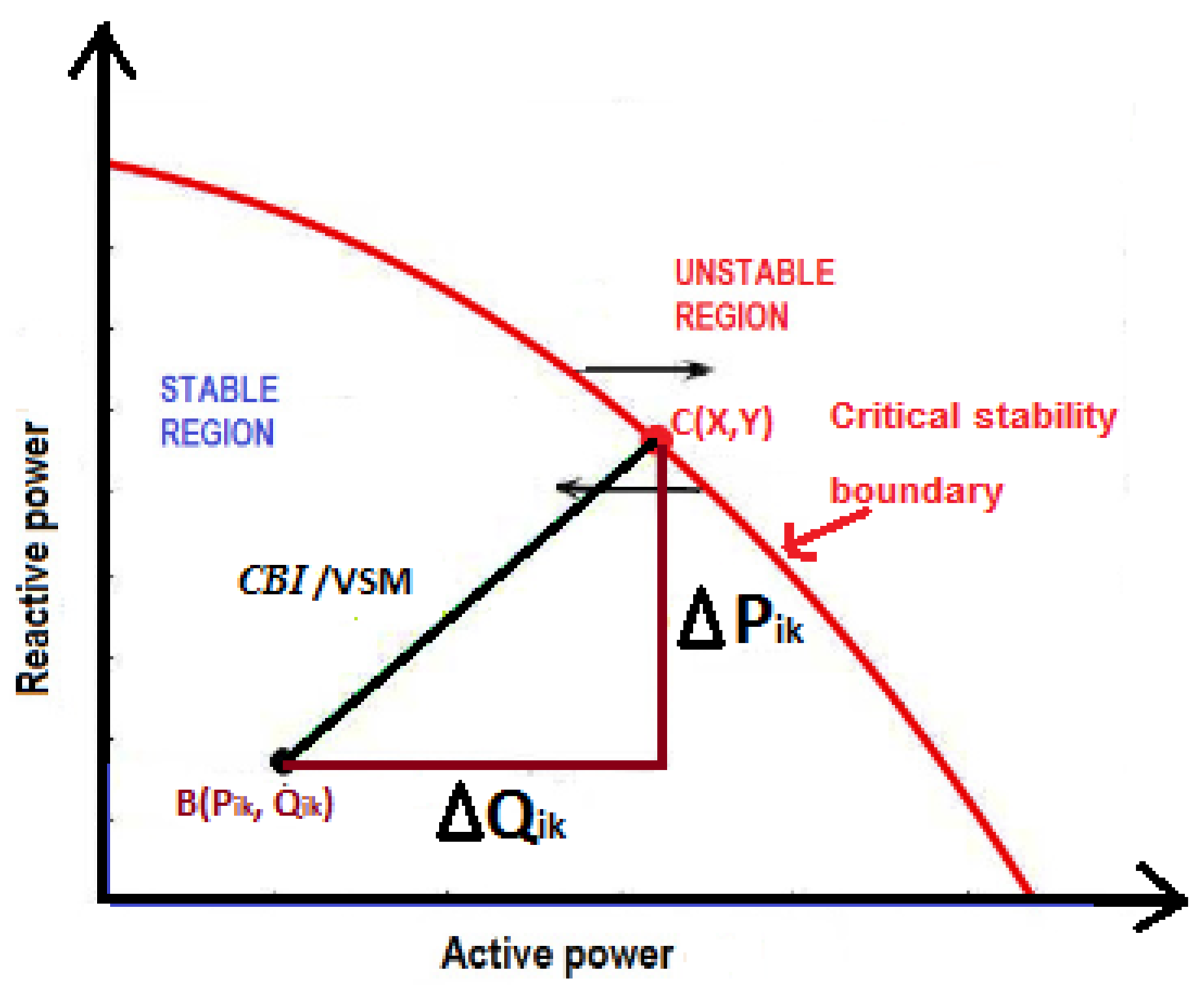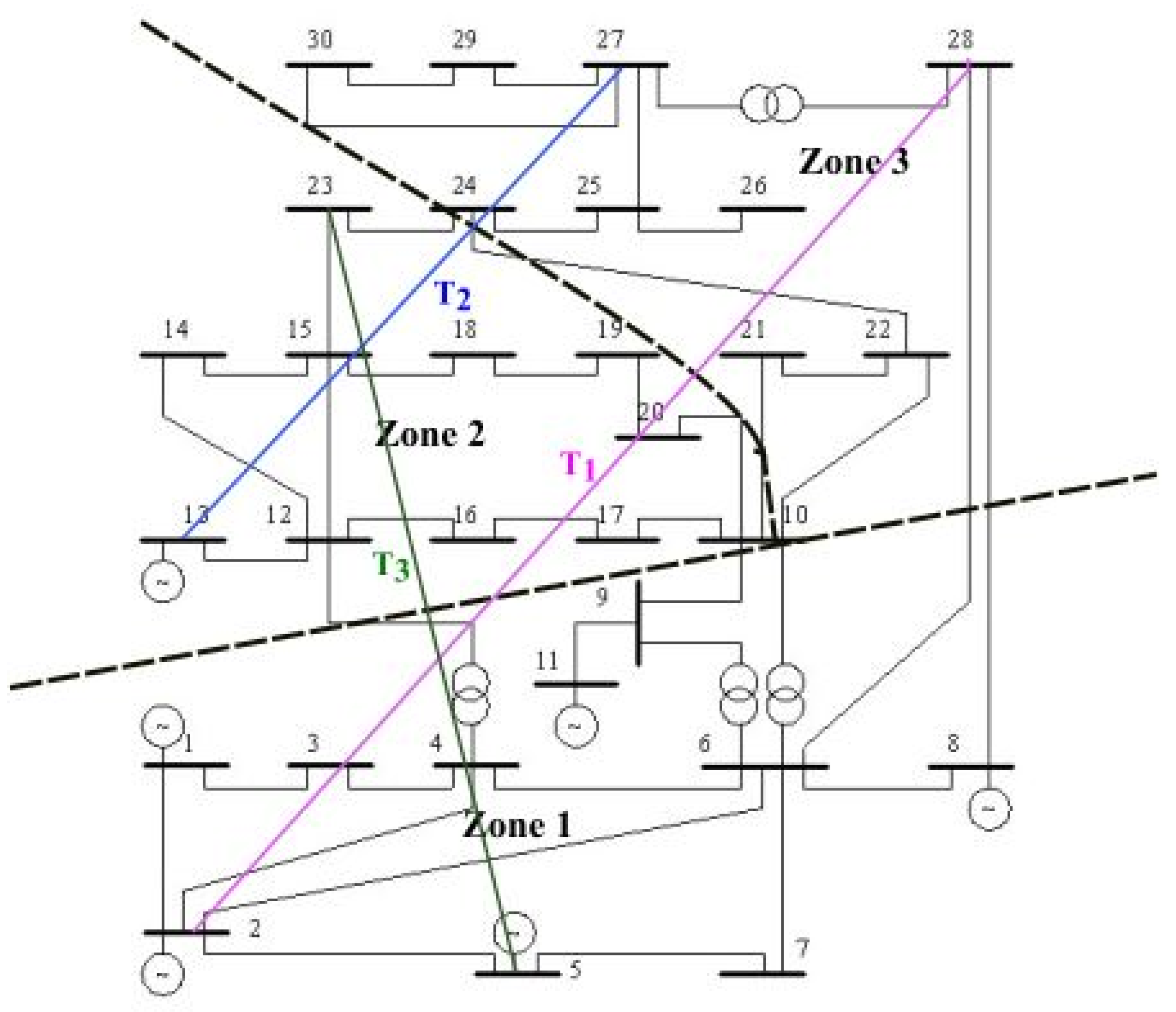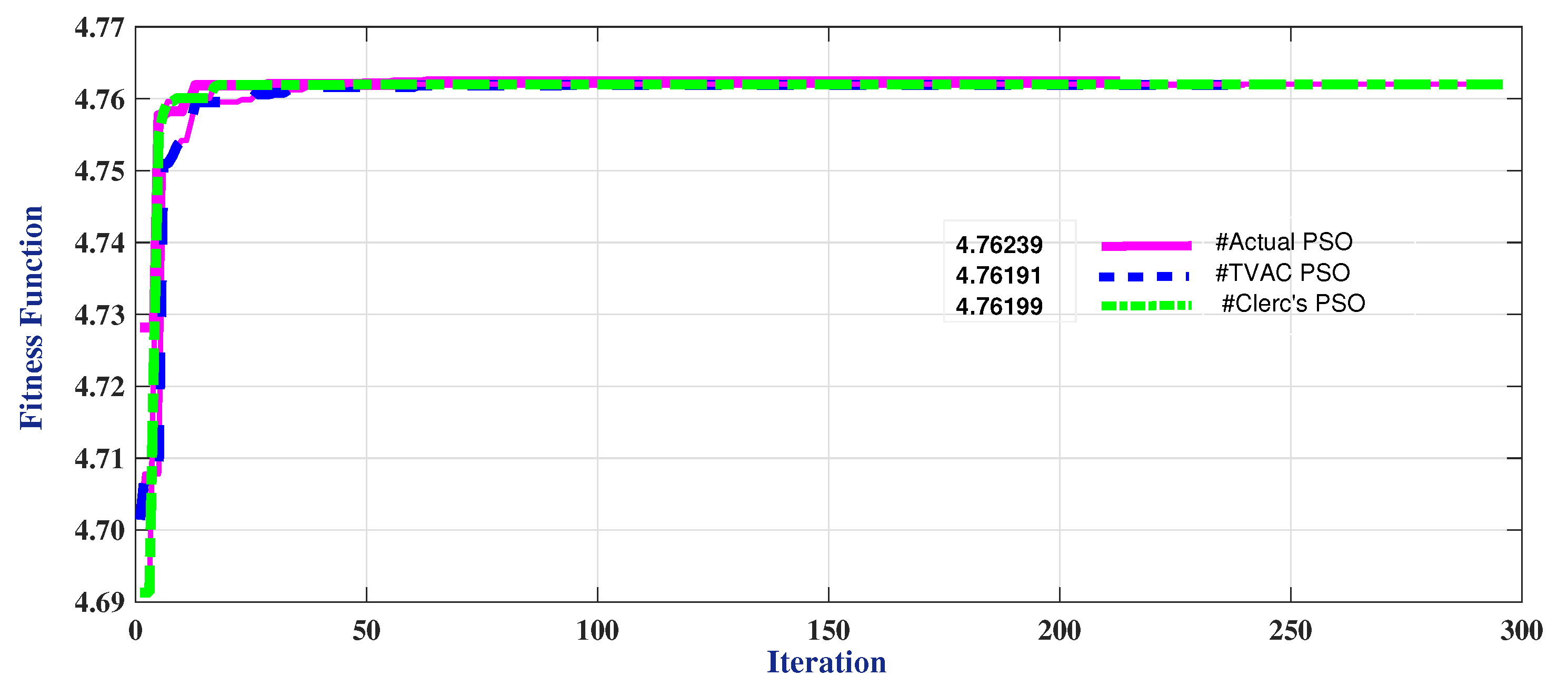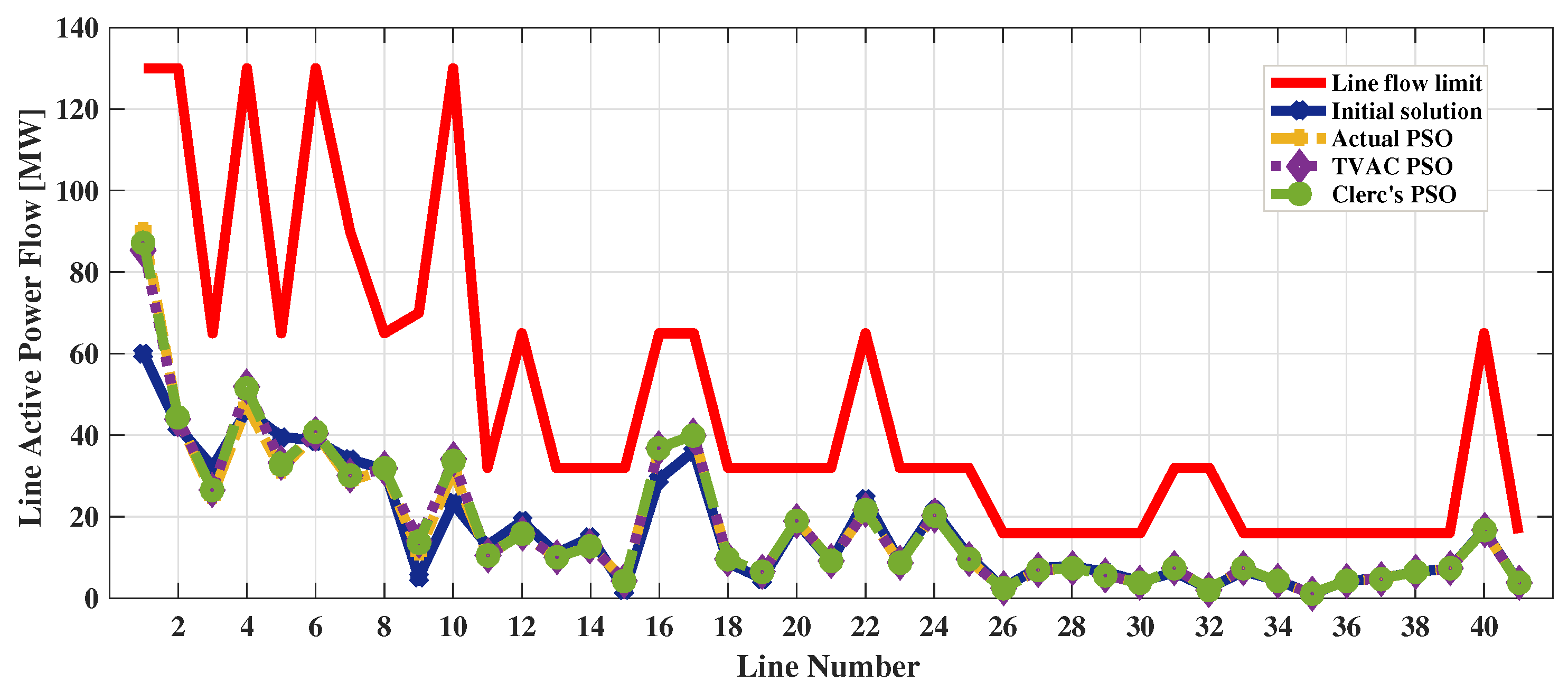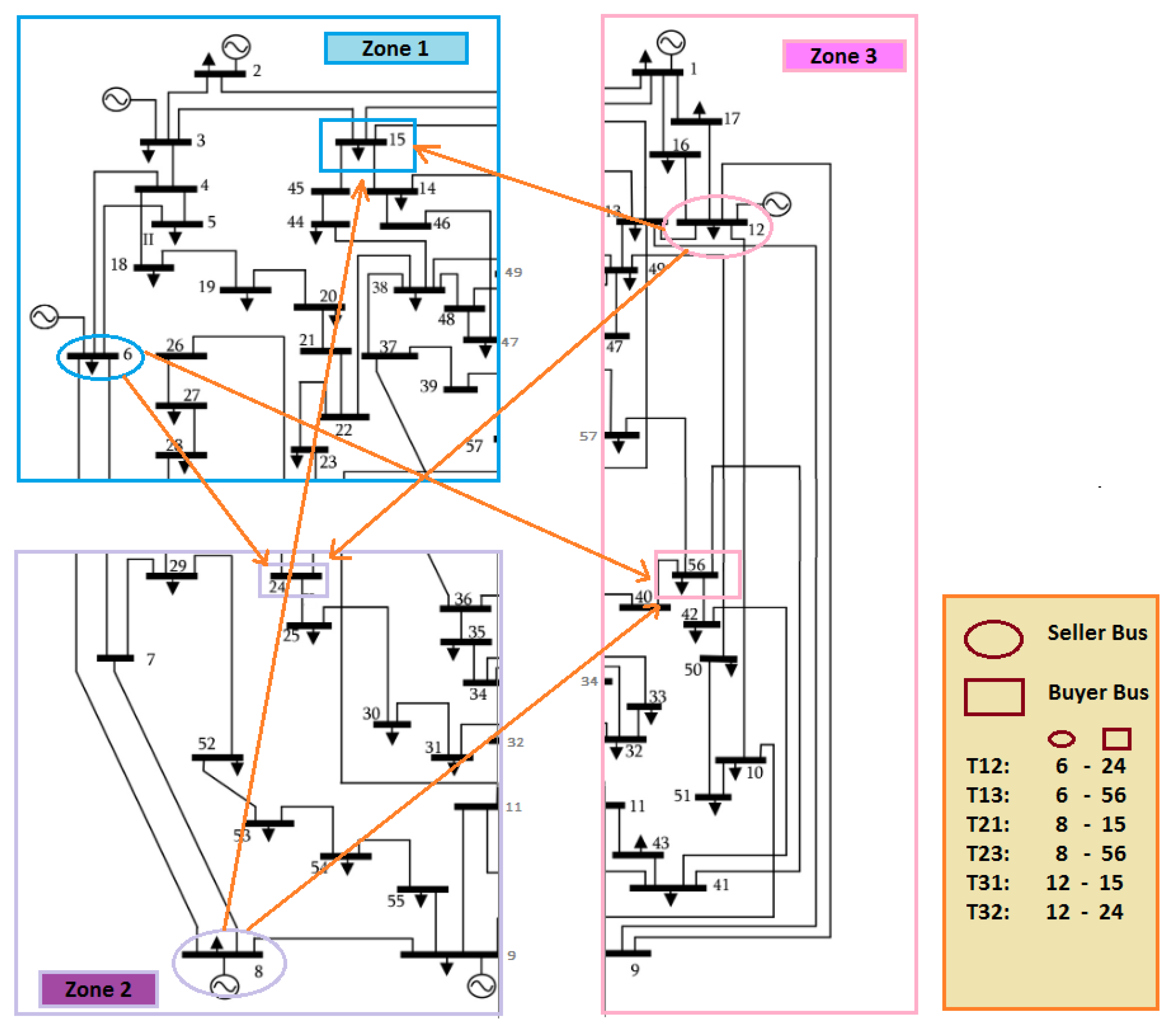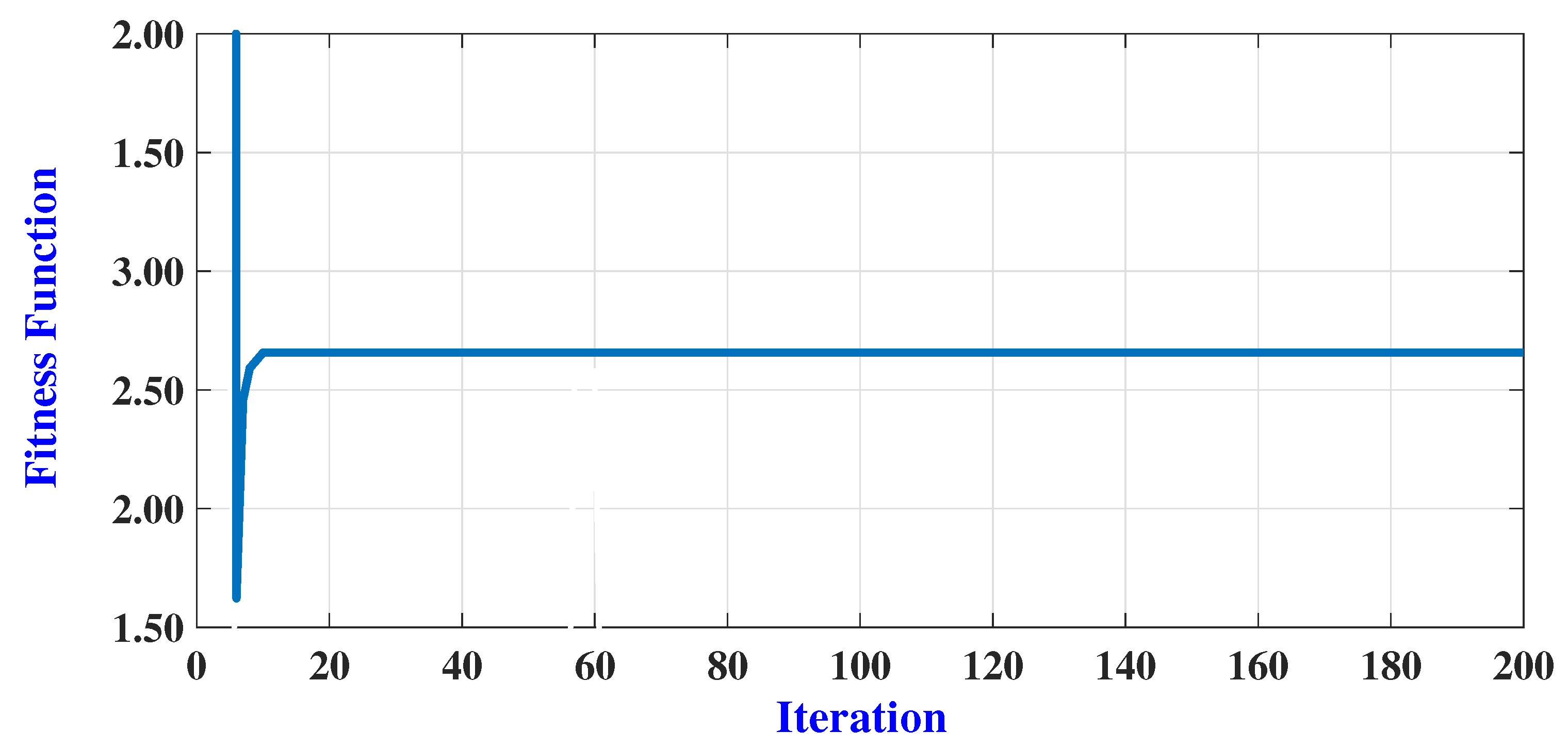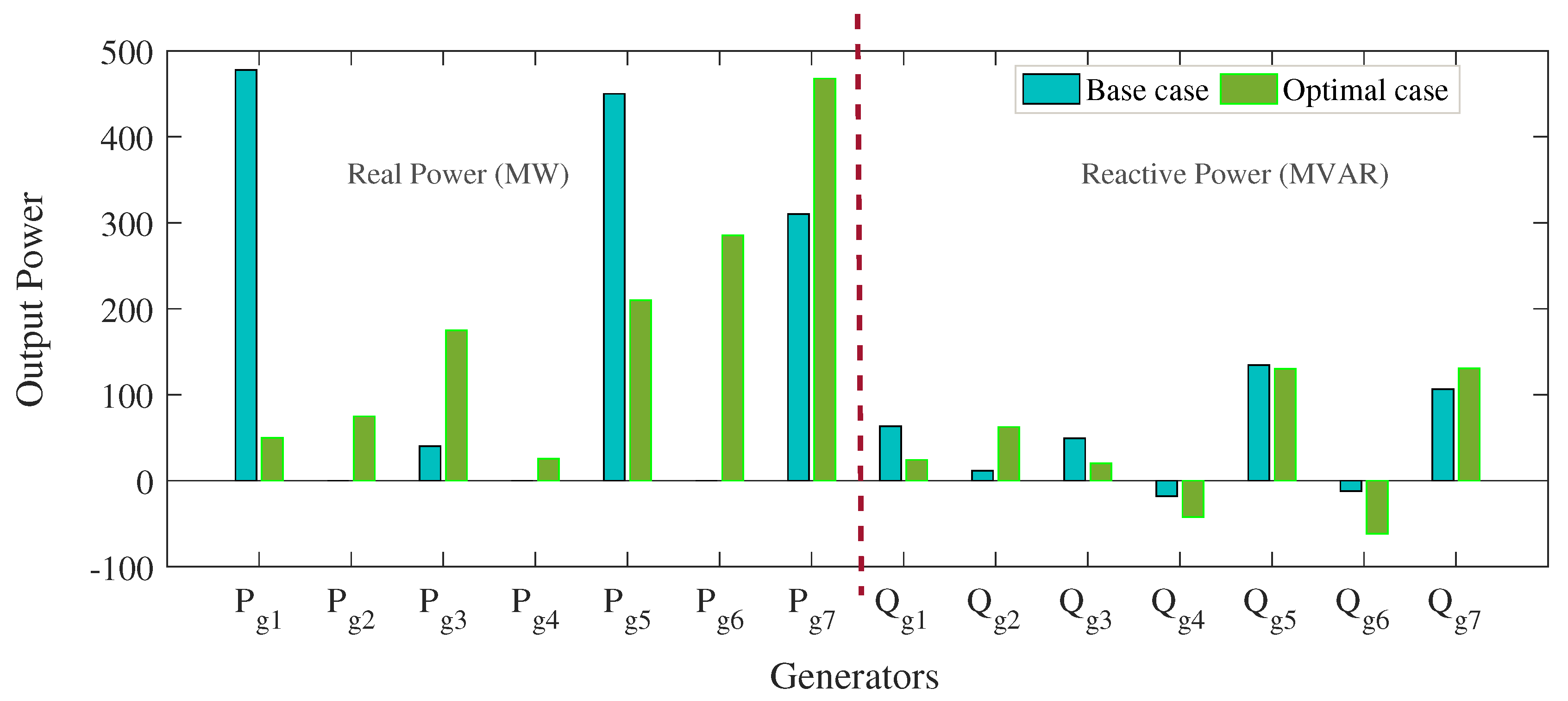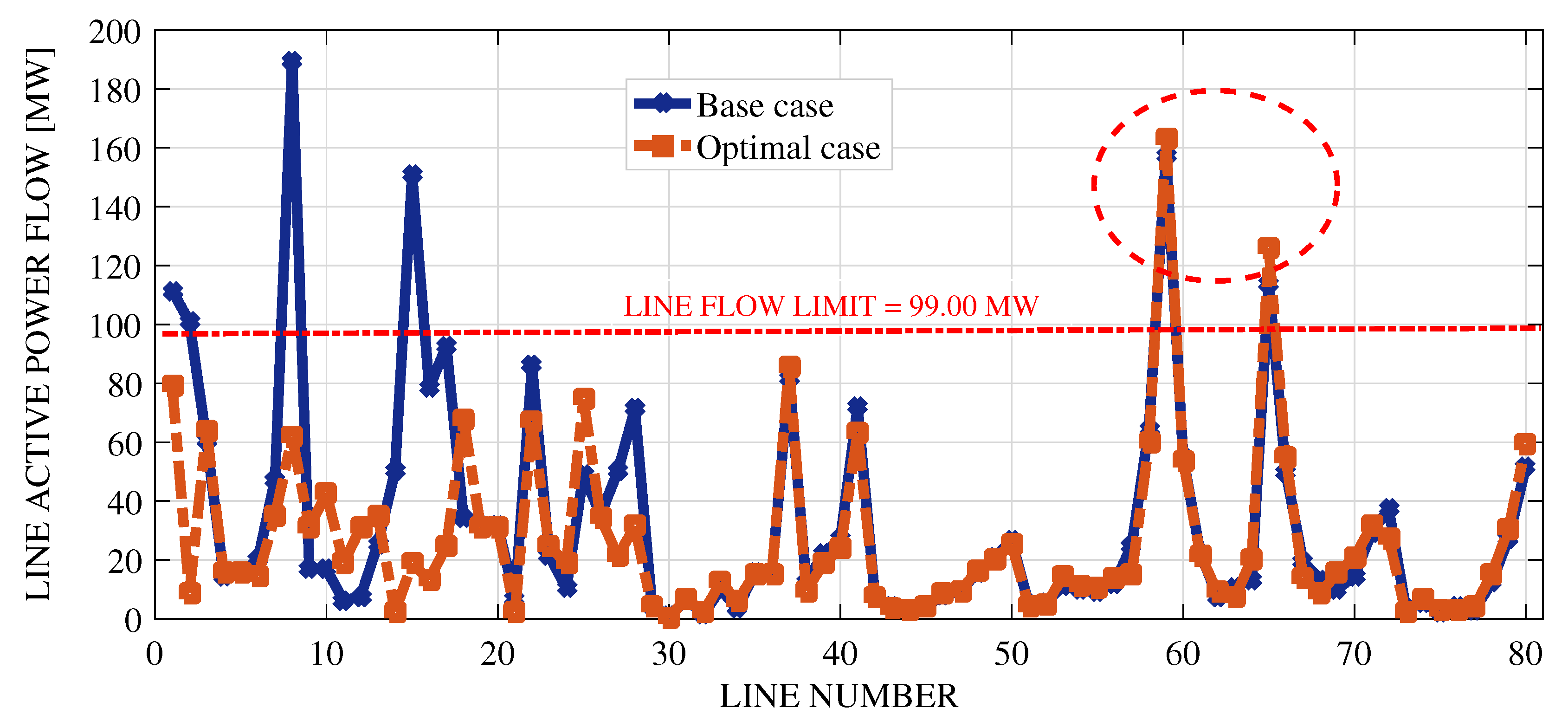1. Introduction
Credible actions that are directed towards promoting techno-political restructuring have been taken by electric utilities all over the world. These actions are essentially for promoting quality service-driven competitions among major participants in the electricity market [
1]. Hence in recent time, the need for adequate planning and scheduling of large interconnected power system is increasingly becoming intense due to the need for better returns on investment for energy investors and quality service delivery to customers [
2]. The dynamism of the electricity network makes it one of the most complex machine to operate despite the increasing sophistication of the power system monitoring and control technologies [
3]. The scope of electricity market interactions has increased; it is no longer a monopolistic/one way dealings of a sole power producer/supplier or a group of power producers working for the common self-interest of profit maximization at the expense of the less fortunate downstream market participants. The liberalization of the energy industry has brought about regulated access to the electricity infrastructures by willing and qualified investors [
4]. Private power generation on both small-, medium- and large-scales are increasing through renewable energy investment and other forms of alternative energy production to cope with the limited energy of both the developed and rapidly developing economies. Hence, the choices of electricity end-users are increasing and with this increase comes more stress on the available power transmission infrastructures. One of the associate problems of the modern power system, especially in today’s deregulated environment, voltage instability.
Voltage stability issues have increased in recent time due to the limited capacity of existing transmission infrastructures [
5]. Hence, power system security measures need to be factored into the calculation of system ATC with adequate consideration for voltage stability margin [
6,
7]. Voltage stability condition of a power system is specifically a reflection of customer load demand, total supplied power and the available transmission capacity; hence it is defined as the ability of power systems to remain within a satisfactory voltage range for all buses at all conditions of operation (fault and loading conditions) [
8]. The operation of the voltage-controlled buses (system generators) is a crucial aspect of the power suppliers actions for economic and efficient energy service delivery, especially in a network that involves multiple power generating plants. The properties of each generator such as the nature of fuel, costs of operation, starting up and shutting down cost and time, distance from the load centers/energy buyers
, differs significantly [
9]. Hence, optimal rescheduling of generator output power is necessary to enhance power system operation such as ATC and voltage stability margin [
10,
11]. In [
12], combined economic emission dispatch (CEED) problem is solved as ATC is estimated for different inter area transactions on both the IEEE 30 and IEEE 118 bus systems. A similar solution for ATC under the CEED environment is reported in [
13] using the trade off approach. ATC calculation with enhancement of bifurcation criteria (closely related to voltage stability analysis) is discussed in [
14]. The determination of ATC within a reasonable range of capacity benefit margin (CBM) using IEEE 24 bus reliability system is discussed in [
15].
In this work, a voltage stability-constrained OPF (VSC-OPF) formulation for enhanced ATC calculation is solved using direct voltage stability margin estimation. The VSC-OPF formulation involves the incorporation of voltage stability margin maximization into the ATC calculation. Simultaneous maximization of VSM with ATC calculation can ensure better power system performance by maintaining a safe voltage stability condition. Particle swarm optimization using MATLAB
® is deployed as the solution algorithm due to its flexibility, easy adaptability and performance for global solution point explorability [
16,
17].
2. Electricity Market Deregulation and Available Transfer Capacity (ATC) Conceptualization
With power system deregulation comes the introduction of energy auction market and hourly energy bidding in real-time power system operation [
18]. The market players are connected to the power system control hub to place bids and enter into energy delivery contracts under the monitoring of the ISO, who acts as the transaction evaluator. The information of a specified amount of electrical power (in MW) at a known price will be supply by power producers (generation companies, GENCOs) and the power auctioneer (ISO) will match it with the bids of qualified customers (distribution companies, DISCOs) based on the information they have on their energy management system. In order to prevent power system congestion, the approval of any transaction between a GENCO and a DISCO is subject to the available transfer capability of the grid. Hence, to avoid system overload the ATC is updated regularly on the ISO open access same-time (real-time) information system (OASIS) for all market participants to check and validate the security of their planned transactions as illustrated in
Figure 1 [
6].
For an economic and reliable supply of electricity, long distance transmission is necessary, especially for inter-area power transactions. The available transmission infrastructure is used by multiple generations and load entities under the competitive bilateral or multilateral transactions [
19]. Hence, the ability to allocate a sufficient MW power on transmission lines without violating system’s stability condition is so crucial to the safe and reliable operation of modern power systems. The ATC gives a physical interpretation of these crucial transmission network bottleneck. The ATC is the measure of the yet to be utilized transfer capability of the transmission network which places a limit on the possible amount of additional generation and load increase. It is always calculated as the estimate of the available transmission capacity that will keep the power system within the safe techno-economic operation zones at the nearest future; with adequate consideration for current commercial uses/commitments of the grid facility [
20]. Hence, ATC can be calculated as the total transmission capacity less the sum of the ISO-controlled operation margins and the sum of the exiting transmission commitments based on already activated transactions, as illustrated in
Figure 2.
Lots of existing research publications have reported the calculation of ATC using several approaches. The commonly adopted approach involves the estimation of some sensitivity factors based on the steady-state operating condition of the power system [
21]. The sensitivity factors approach is recognized as being easier and time-efficient. The sensitivity factor gives the relationship between the quantity of active power transaction between two or more buses and the actual power flow along each line. This index is often referred to as the power transfer distribution factor, PTDF. It can either be calculated approximately by using DC power flow as DCPTDF or more accurately using the AC power flow as ACPTDF [
22,
23]. In this work, the calculation of the ATC for strategic inter-area bilateral transactions is assessed using the voltage stability-based AC-OPF approach.
The performance of the power system in steady-state operating condition based on Newton-Raphson power flow solution is represented by the Jacobian matrix connection between the change in bus power and voltage parameters as given below [
24]:
where the matrix
is the Jacobian matrix as described below:
The MW power flow along the transmission line connecting buses
i and
k in polar form and rectangular form can be written as Equations (
3) and (
4), respectively:
where,
and
are the magnitude and angle of the element in the
ith row and
kth column of the admittance bus/matrix,
.
and
are the corresponding real part (conductance) and imaginary part (susceptance), respectively. The Taylor’s series expansion (neglecting the higher order terms) of the change (sensitivity dynamics) in active power flow along the line connecting buses
i and
k, for any inter-bus power delivery, is obtained as:
Equation (
5) can be re-written in compact matrix form as given below:
The sensitivity coefficients in Equations (
5) and (
6) are obtained from the partial derivative of Equation (
4) as defined below [
23]:
According to Equation (
1), Equation (
6) can be re-written to capture the actual change in power injection as:
The row vector that contains the sensitivity coefficients is actually sparsely filled with all the coefficients strategically positioned based on the considered line and the total number of load buses [
6]. The same situation is realized with the column vector that contains the change in power; for a bilateral transaction between a seller bus
p and a buyer bus
q, the portion of the transacted power is carried by line connecting any two buses
i and
k. For a change in MW transaction,
, between transacting buses, the change in the MW flow on the line connecting buses
i and
k is
and the change in injected power at all buses except the two transacting buses is zero. The change in injected power at buses
p and
q becomes
and
, respectively.
This new power mismatch is taken into consideration in Equation (
1), for calculating the new system’s operating states from which the change in the power flow in each transmission lines,
can be calculated. Hence, the corresponding AC power transfer distribution factor,
for each of the transmission lines is calculated according to Equation (
13) [
25]:
To compute the
from the estimated
, we first find the maximum allowable MW power flow along all the transmission lines considering their thermal limits and the base case power flow as given below:
where
and
are line flow limit and MW power flow along each line for the change in transaction
. Finally, the
is specified as the minimum
and the corresponding line is the limiting transmission line. The ATC is to be maximized according to Equation (
15).
3. Voltage Stability Margin Calculation Using Critical Boundary Concept
The VSM calculation approach that is used in this study is expressed in terms of the maximum load increase that each transmission line can withstand without violating the system stability limits as illustrated in
Figure 3. The details of this optimal stability margin calculation approach are discussed in [
26]. The limit for voltage stability of the power system steady-state operation is the boundary curve whose locus is described by Equation (
16).
The VSM, also called the critical boundary index (CBI), is a function of the active and reactive loading as illustrated in
Figure 3 and can be obtained by the simultaneous solution of the set of equations obtained from the partial derivatives of Equation (
17) with respect to
X,
Y and
:
X and
Y are the critical active and reactive loading points, which are nearest to the voltage collapse point, respectively and
is the Lagrangian multiplier for incorporating the stability constraint. The distance between the current operating point,
to the point,
on the static critical boundary is calculated and the minimum CBI value (for the most critical line) is to be maximized according to Equation (
21).
and are the active (MW) and reactive (MVAR) power flow along each transmission line considering the change in transaction between the seller bus and buyer bus without violating the voltage stability margin constraint.
4. Proposed VSC-OPF ATC Enhancement Problem Formulation
In this study, combined ATC and voltage stability margin (VSM) maximization is considered as the objective function using weighted sum approach (WSA). WSA as described in [
27] involves merging two or more objective functions together to yield a single objective as given by Equation (
22) below. If
consists of
n objective functions each with
m decision variables, then the multiobjective problem can be defined as finding the vector
which minimizes
as shown:
contains the scalar weighting components for each objective function. Based on the above described approach, the objective function in this work is thus described as:
where:
The decision variables are the active and reactive power output,
and
, of the system generators.
and
are the obtained ATC and CBI values at base (non-optimal) case. The system constraints are the power balance equations, generators output (
and
) limits, bus voltage magnitude (
V) limits, line flow limit (
) and steady-state voltage stability margin (
) limit as given by Equations (
26)–(
32) [
28,
29].
Subscript
g,
d and
stands for the generation, demand and injected power at each bus.
and
represents the total number of system generators and buses, respectively. The constraint (minimum limit) of the stability margin of each transmission line is set at 20% of the line’s thermal limit
[
30]:
The violation of any of the constraints is added to the objective function using the quadratic penalty function approach for constrained optimization [
31].
where
and
are the penalty function for the decision variables and parameter limits, respectively.
and
are the sets of decision variables and constraints.
5. Particle Swarm Optimization Techniques Overview and Variants
PSO algorithm mimicks the behavior of swarm of birds; the behavior of each bird within the swarm is regarded as personal best and the interaction of each bird within the swarm, is considered as global best [
32]. The optimal solution is achieved by coordinating the movement of each particle towards its own personal best location, in such a way that the it reinforces the strength of the entire swarm at each generation. The trajectory of each particle is dynamically calculated as the absolute velocity of each particle with reference to its nearest neighbours and the corresponding position in the search space is updated to yield the personal best [
33] as illustrated below.
Let: and , represent the position and velocity vectors of the ith particle in the search space with d-dimension, respectively; the value of the fitness function will be evaluated at each iteration count and the best position of each particle at a particular time (known as the local best) is obtained and stored as . The best position out of all the local bests is stored separately as the global best, . At the succeeding iteration steps, the procedure is repeated, the best out of the local best is selected and compared with the existing global best, if the new best among the local bests performs better it replaces the global best, if not the previous global best is maintained.
5.1. Classical (Actual) PSO
The velocity and position update dynamics for the fitness function evaluation for a classical PSO are described by Equations (
35) and (
36):
w is the inertia weight that is linearly varying over the generation (iteration).
is the current iteration count, is the maximum number of iterations. and are the lower and upper boundary values of the inertia weight, respectively. and are the cognitive (personal) and social (global) factors for the swarm interactions, respectively.
5.2. PSO with Time-Varying Acceleration Coefficient (TVAC)
In the classical PSO,
and
are both chosen to be constant (usually 2.0). However, the social and cognitive factors can be made to be vary linearly with the iteration counts instead of being constant. This is based on a variant of PSO known as PSO with time-varying acceleration coefficients, PSO-TVAC described in [
34,
35]. This is modelled after the approach of the linearly varying inertia weight as shown below.
, , and denotes the start and end limits of the cognitive factor, and the social factor, , respectively. The goal is to help to prevent premature convergence and it also helps to achieve better speed of convergence.
5.3. PSO with (Clerc’s) Constricted Weighting Factor
Another PSO convergence improvement approach involves introducing a weighting coefficient,
known as the clerc’s constricted factor to the velocity dynamic as defined below [
36].
where (
=
+
and
).
The considered PSO parameters used in this study are provided on
Table 1.
